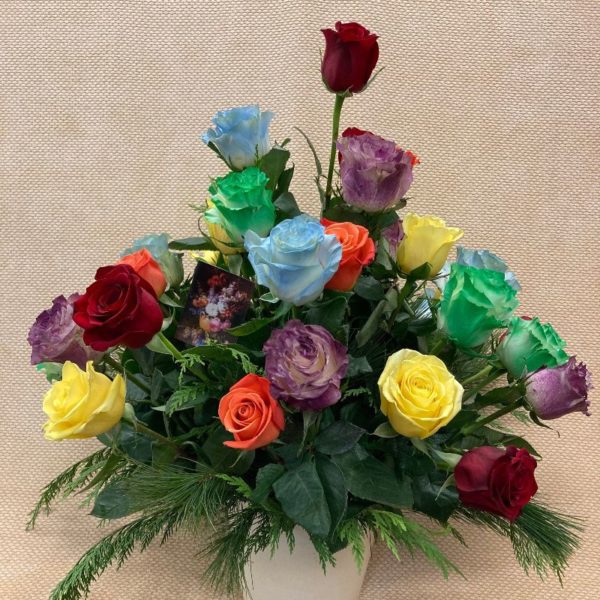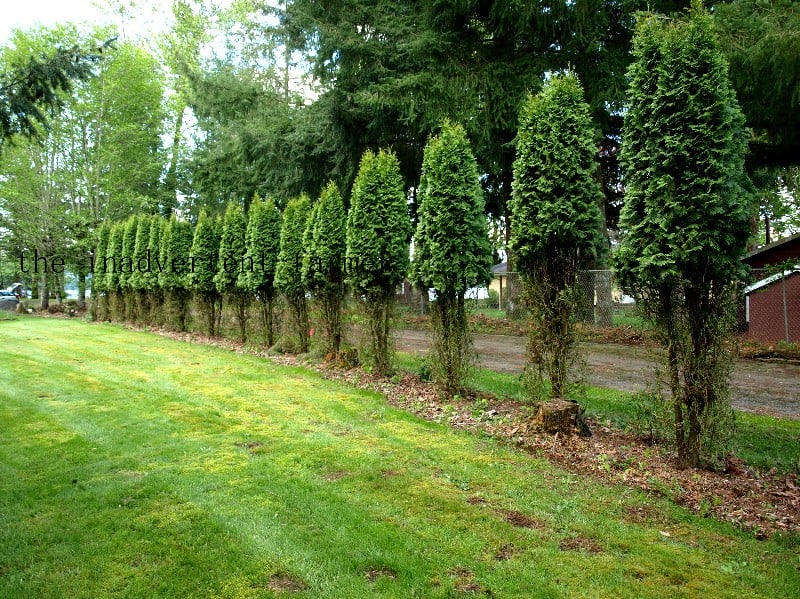What’s Budding

What’s Budding

Roses — Symbolic Meanings Behind the Colors
Roses have been used as symbolic messengers for centuries. Giving red roses is a symbol of romantic love. Yellow roses are supposed to symbolize friendship and caring. In Victorian times, they meant jealousy! They also aptly say good luck or welcome back. Peach is the color for modesty and sincerity. Peach is a great color also for a thank you bouquet.
White roses represent purity, innocence and youth. Ivory is for thoughtfulness, charm and grace. Orange fiercely proclaims desire or fascination. Pink reflects femininity, elegance, refinement, sweetness. If you want to convey wonder or mystery, lavender is the color for you. Green is, of course the color of growth, bounty and abundance.
Often these assigned meanings are not how we buy flowers. We coordinate with colors in wedding décor, we buy a favorite color for a friend or spouse, a single flower in a color that represents a school, team or organization.
Sometimes we simply buy the mixed bouquet, or the one that looks freshest.
Just remember that flower colors have long held special meaning, so be aware that your gift purchase may be saying something to the recipient that isn’t written on the floral card.

On the Green Side

Digging In

The Three Types of Clematis
Over the last several years, clematis have become a hugely popular perennial climbing vine. With 300 species, and plenty more hybrid varieties, there are so many to choose from. The different varieties come in a wide range of mature heights, bloom times, flower forms and colors. Clematis flowers can vary from big and star-like, to bell-shaped, miniature, and frilly doubles. The colors of blossoms include white, pinks, reds, purples, and yellows. Depending on the species, vines can grow from three feet to twenty or more.
Clematis are divided into three groups according to bloom time, with each group having its own pruning protocols. It is important to know what group the clematis you own, or want to buy, is from. This allows the plant to get proper care and the most flowers possible.
Group 1 flowers in the spring on old wood. These clematis require little to no pruning. If they need to be pruned, prune lightly just after flowering to give the plant as much time as possible to develop for the next season. Remove any dead or damaged stems. Remember, with this group, the new growth this summer will bear next years flowers.
Clematis in Group 1 are easiest to prune, but the hardest to find for sale. Group 1 includes the clematis species alpina, armandii, cirrhosa, macropetala, and montana. These are usually purchased through catalogs or websites.
Group 2 clematis typically produce a heavy flush of flowers in early summer, and then bloom again in small quantities later in the season on both old and new wood. Prune clematis belonging in this group after late flowering, back to a pair of buds, about halfway down the stem. Remove any dead or damaged wood. In late winter/early spring, remove up to one-third of the stems to ground level or just above the strongest most visible buds. Without pruning, plants get top-heavy and produce fewer flowers.
A few varieties of clematis included in Group 2 are: ‘Dr Ruppel’, ‘Guernsey Cream’, ‘Multi Blue’, and ‘Niobe’.




Group 3 clematis produce flowers late in the summer on the current season’s growth. These varieties typically die back to the ground in winter. In late winter or early spring, be sure to cut them down to two inches from the ground. Old vines left in place looks messy.
Some varieties of Group 3 clematis include: ‘Sweet Autumn’, ‘Ernest Markham’, ‘Comtesse de Bouchaud’ and ‘Jackmanii’




When selecting your clematis, think about the space where you want your clematis. Most varieties can get 10 to 20’ long. Consider the structure they will grow on, and how much sun/shade they will receive. Clematis need something to climb on that is a half inch in diameter or less, such as twine, wire, thin branches, wooden dowels, or steel rods. To reach their full potential, clematis need at least six hours of sun each day, and their roots prefer cool soil. I like to use companion plants around the clematis to provide some cool shade for their feet.
Clematis prefer organic, rich, well-drained soil. Water weekly for the first season, and use a nice layer of mulch to help keep the roots cool and moist. Take care when planting, as the emerging vines, and roots are easily broken.
If you are unsure of what group of clematis you own, take a season to take notes and photos. Observe when your clematis produces buds and flowers, and whether it blooms on old wood, new wood, or both. Once you determine the group it belongs in, prune according to that group. If left unmaintained, vines may become overloaded with old stems that produce few flowers. The flowers are usually only produced at the top of the plant, not where they are most visible, and the plants run the risk of tearing down their support structure under their own weight. Pruning stimulates new growth, and encourages the plant to flower lower -where flowers are best enjoyed. Pruning will increase numbers of blooms, and help to keep the plant healthy.
If you are interested in selecting, growing or maintaining clematis vines, we would love to help. Call The Plant Professionals and ask for Alexa to discuss integrating this perennial vine into your landscape.

The Buzz


Deer Repellent
As beautiful as deer are grazing in fields, or silently walking through the woods, they are ravenous eaters. Deer can cause severe damage to the landscape as a result of browsing on, and trampling of plants. I design with deer resistant plants where deer are known to be present. Unfortunately, deer don’t read the deer resistant plant list. Where deer populations are high, the resistant list becomes short.
If hungry, deer will eat almost anything. When designing gardens with a deer in mind, I often use plants such as catmint, Russian sage, and yarrow, in between plants that might be more desirable to nibble on. These plants give off a strong fragrance that the deer don’t like and can deter them away from the garden.
When combating deer predation, it is important to be proactive, and to use several deer-repelling strategies. Deer are very persistent once they are used to feeding in an area, so once damage is noticed, immediate action is needed to prevent continual harm. Deer thrive in suburban areas due to few natural predators. The lush landscapes with tender new growth give deer easy access to nutritious, stress-free food.
Many different approaches can be taken to prevent damage. These include fences, motion detection sprinklers, netting, burlap and repellent. If you have a small vegetable garden, fencing may be a good option. Deer don’t like to jump into small, confined spaces. For fencing to keep deer out of an entire yard, a fence needs to be 10-12’ tall. Amazingly, deer can jump eight feet high! Keep in mind that most neighborhoods restrict fences, or fences over a certain height, and fences can be costly.
For around $50, a large selection of motion detection sprinklers that blast critters with water when they cross the sensor are available. One problem that I find with this system is that you need to keep a garden hose hooked up with the water on. I have seen hoses develop a blow out when hoses are under pressure from water for a long period of time. If this is a chosen method, inspect the hose regularly to avoid a high water bill from a leaking hose.
I will never forget walking in a garden with a customer that used this method. She didn’t have deer nibbling on her garden anymore, but still kept the sprayer in place just in case. As we rounded the corner she suddenly screeched to a stop. We came within a hair of getting an unwanted shower, as she had forgotten to turn it off upon my arrival. The client and I had a good chuckle over that close call. I have often wondered how many unsuspecting people have suddenly found themselves drenched.
Netting is an option that is readily available in garden centers. I find it is best used to protect small trees or bushes temporarily. Use a few stakes on either side of the plant to support the netting. Netting around a vegetable garden seems to be only a temporary fix as well. Eventually the deer learn that they can just run through it!
In winter, when food becomes scarce, deer turn to woody plants and shrubs that maintain their evergreen growth over winter. This includes their favorite yews, arborvitaes, and euonymus. I am sure we have all seen a hedge of arborvitae chewed into a line of popsicle shaped plants, or yews that have been nibbled down into sticks, with a few sprouts of stubby green needles. I have seen many evergreen plants wrapped in burlap to protect them from the deer. While burlap protects the plants from the cold winter winds, it is also an eye-sore, and negates the reason we plant evergreens. We want to see the green color in the dreary gray of winter.
The most effective method is a granular or spray repellent applied regularly. In winter, sachets of granular repellent can be hung in the branches fence or on posts, etc. The benefit to using sachets vs. spray in the winter is the granular repellent won’t be washed off by snow. The traditional spray usually contains a strong taste deterrent such as long lasting thiram with a sticking agent, as well as a smell that the deer do not like. The best time of day to apply spray repellent is in the early evening, or after the dew has dried in the morning.
Moisture on the plants prevents the product from sticking. Spray repellent needs to be applied one hour before it rains or overhead watering occurs. The average application is once per month. You may need additional applications if there is a high population of deer in your area, you are trying to break an established feeding habit, or if there is a scarcity of food. Additional spraying may also be warranted when heavy rainfall has occurred.
The Plant Professionals offers a monthly, deer repellent program for your landscape. Call us for an appointment to discuss how this program might work for you.